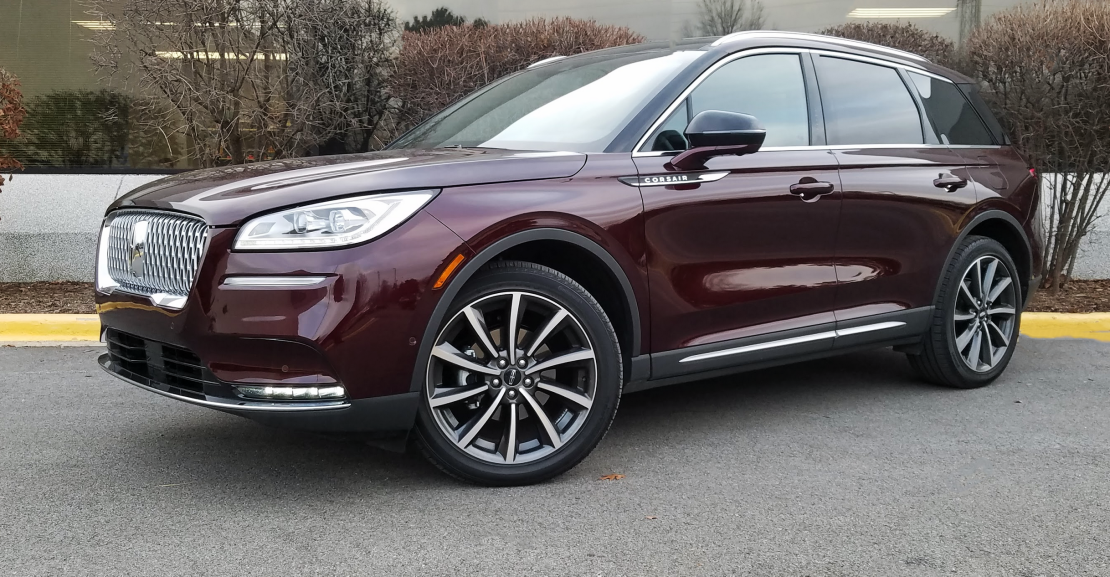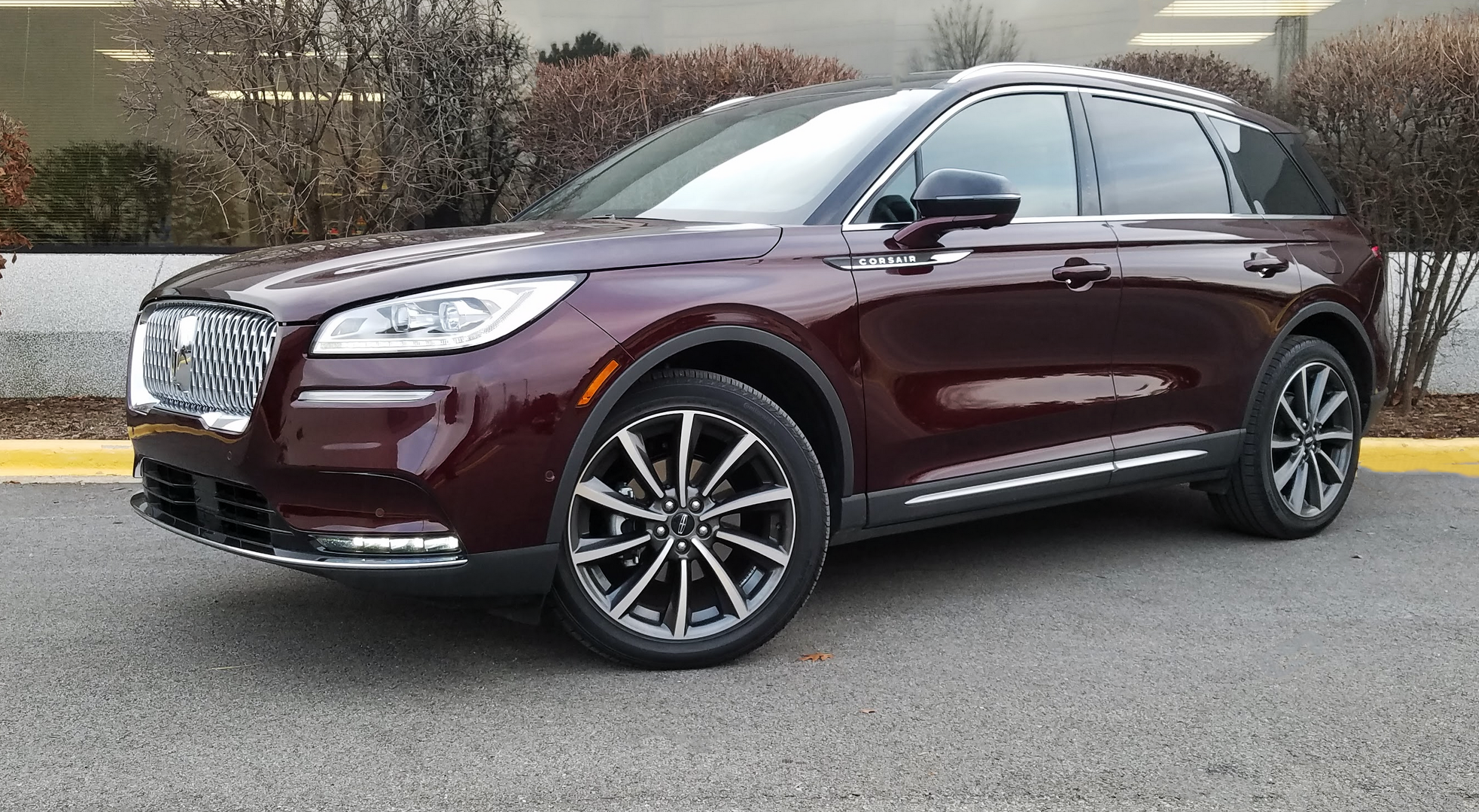
2020 Lincoln Corsair Reserve AWD
Class: Premium Compact Crossover
Miles driven: 317
Fuel used: 15.1 gallons
Real-world fuel economy: 20.9 mpg
| CG Report Card | |
|---|---|
| Room and Comfort | B |
| Power and Performance | B- |
| Fit and Finish | A |
| Fuel Economy | B- |
| Value | C+ |
| Report-card grades are derived from a consensus of test-driver evaluations. All grades are versus other vehicles in the same class. Value grade is for specific trim level evaluated, and may not reflect Consumer Guide's impressions of the entire model lineup. | |
| Big & Tall Comfort | |
| Big Guy | A- |
| Tall Guy | A- |
| Big & Tall comfort ratings are for front seats only. "Big" rating based on male tester weighing approximately 350 pounds, "Tall" rating based on 6'6"-tall male tester. | |
| Drivetrain | |
| Engine Specs | 295-hp 2.3-liter |
| Engine Type | Turbo 4-cylinder |
| Transmission | 8-speed automatic |
| Drive Wheels | AWD |
Driving mix: 70% city, 30% highway
EPA-estimated fuel economy: 21/28/24 (city, highway, combined)
Fuel type: Regular gas
Base price: $44,830 (not including $995 destination charge)
Options on test vehicle: Reserve II Equipment Group 202A ($11,540), Burgundy Velvet Metallic paint ($695), head-up display ($1700), 20-inch Ultra Bright machined aluminum wheels ($1150)
Price as tested: $60,910
Quick Hits
The great: Posh interior trimmings, broad range of available comfort and technology features
The good: Quiet, comfortable ride; decent passenger room within tidy exterior dimensions
The not so good: Optional equipment pushes reasonable starting prices skyward; some minor ergonomic peculiarities
More Corsair price and availability information
John Biel
It’s the SUV’s world now, and we just live in it. Lincoln Motor Company knows that as well as anybody in the auto business. In two years’ time it has redone its entire 4-tier sport-ute and crossover roster. It has rebadged most of them, too, sweeping out the hard-to-follow (and swallow) MK trio in favor of nameplates that are actual nouns.

The final element of Lincoln’s product plan—so far—is now in place with the release of the Corsair, a premium compact crossover. Derived from the new-generation 2020 Ford Escape, it replaces the Lincoln MKC. When powered by a gas engine, it is offered in two trim levels, Standard and Reserve, with a choice of front- or all-wheel drive. (A Grand Touring plug-in hybrid is scheduled to join the Corsair lineup as a mid-year addition.)
Test Drive: 2020 Mercedes-Benz GLC 300
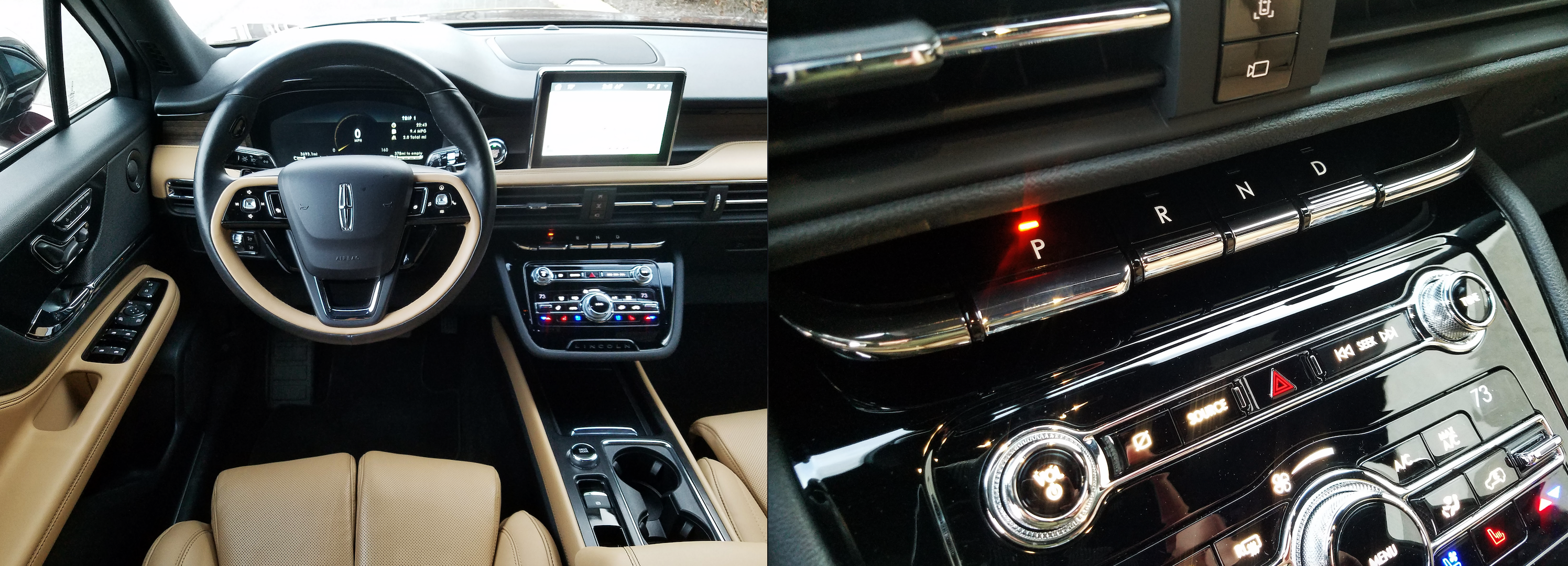
Consumer Guide tested an AWD Reserve that starts at $45,825 with delivery ($2200 more than with front drive), but escalated to $60,910 with the addition of the available 2.3-liter engine and a bunch of technology, comfort, and appearance options. Indeed, one expansive equipment group accounted for $11,540 of that surge—holy Monroney!
The inside of this Corsair was like a smaller-scale version of the midsize ’20 Lincoln Aviator Reserve that CGers have also tested. There’s the same kind of rigidly horizontal split-level theme to the instrument panel. (When we first drove the Corsair at an automotive-media luncheon in Chicago, Lincoln personnel mentioned Frank Lloyd Wright influences on the design. We have to admit we get it now, on second look.) Electronic displays for gauges and the Sync3 infotainment system with voice-activated navigation are practically identical; there’s even the same sure-to-be-accidentally-touched voice-command button in the upper-left portion of the steering wheel. Both vehicles share horizontally arranged push buttons for the automatic transmission and a console dial to select drive modes. Front seats have a hard-backed shell out of which the leather seat backs and cushions appear to rise like soufflés.
Test Drive: 2020 Lexus NX 300 F Sport
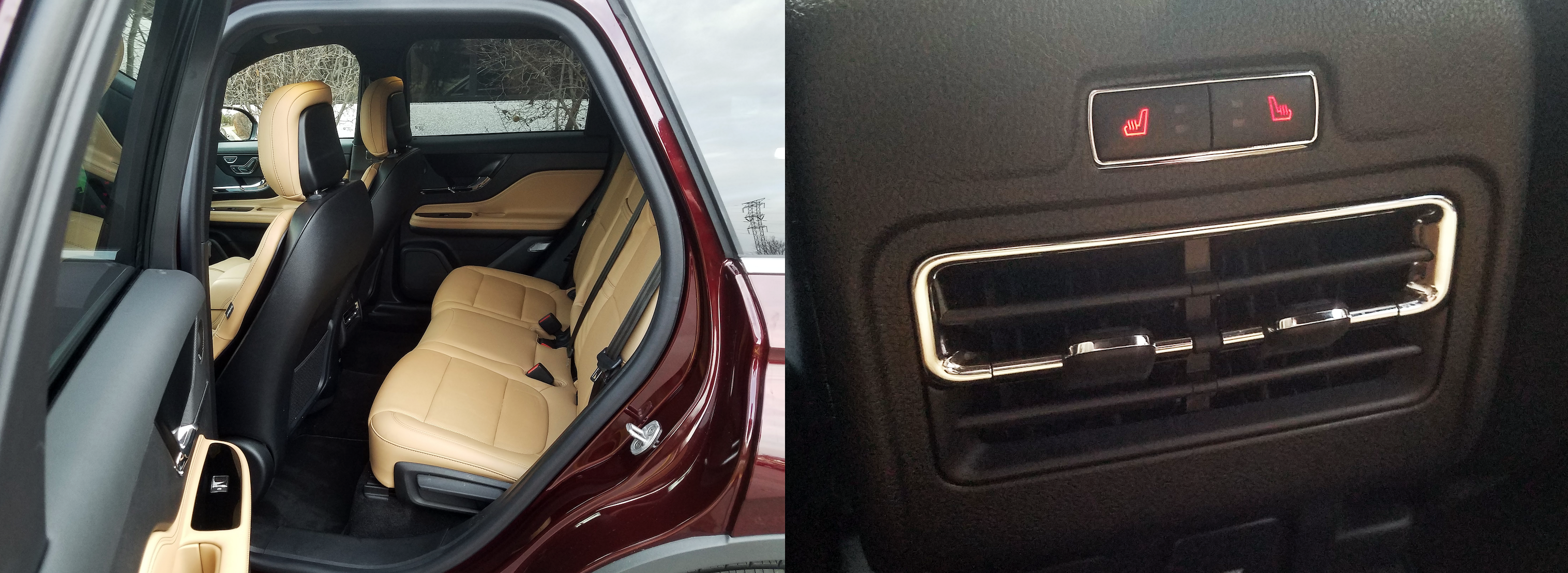
Of course, the interior dimensions of the two Lincolns from different classes aren’t the same. Nonetheless, most adults invited into the smaller Corsair will find worthwhile leg- and headroom in either row. Under the best of circumstances, three adults might be able to sit across the second row. Big door openings make for easy passage, and step-in height won’t raise anyone’s hackles. Once in and on the road, passengers will enjoy a quiet and tasteful environment in the Reserve with genuine wood trim on the dash and lots of soft-touch surfaces. Meanwhile, the driver will appreciate fairly uncluttered sightlines.
Configurable driving displays show up well, but cycling through the driver modes, from “Normal” to “Conserve,” “Excite,” “Slippery,” and “Deep Conditions,” doesn’t strike us as being in a natural order. It seems the two surface-dependent settings should be at the end of the dial since they’re not the kinds of things drivers are likely to need or want most of the time. Sync3 is generally easy to understand and use—audio inputs are particularly straightforward—but there are a lot of systems and functions embedded within, so the distraction level can be high depending on what a driver is seeking. The standard dual-zone climate unit has a central fan-speed dial but buttons for everything else. The unorthodox transmission buttons will take a tiny bit of getting used to, but the critical “Drive” button is all the way over to the right, where even CG’s lankiest tester found it to be a stretch to get at.
Test Drive: 2020 BMW X3 M Competition

There’s a commendable 27.6-cubic-foot cargo area behind the second row, with a little bit more organized space under the flat load floor. Drop the 60/40 rear seats—which fold almost flat—and capacity climbs to 57.6 cubic feet. A decently sized glove box, a so-so covered console cubby, net pouches on the front seat backs, and small door pockets serve personal-item storage needs. Two open cup holders are in the console, and two more pop out of the front of the pull-down rear-seat armrest.
Having tested the popular Lexus RX 350 right before driving the Corsair, this driver couldn’t help noticing that the Lincoln’s optional 2.3 turbo four makes the same 295 horsepower as the Lexus’ 3.5-liter V6, but with lots more torque that arrives sooner (310 lb-ft at 3000 rpm). Considering that it’s 500-some pounds lighter than the midsize RX with all-wheel drive, the Corsair feels zippier once it fights through a moment of turbo lag. There’s no protest or confusion from the 8-speed automatic transmission. EPA fuel-economy estimates are 21 mpg in city driving, 28 on the highway, and 24 combined. This reviewer charted 20.25 mpg after covering 171.7 miles, 66 percent of which were in city-type motoring.
Test Drive: 2019 Audi Q3 S Line
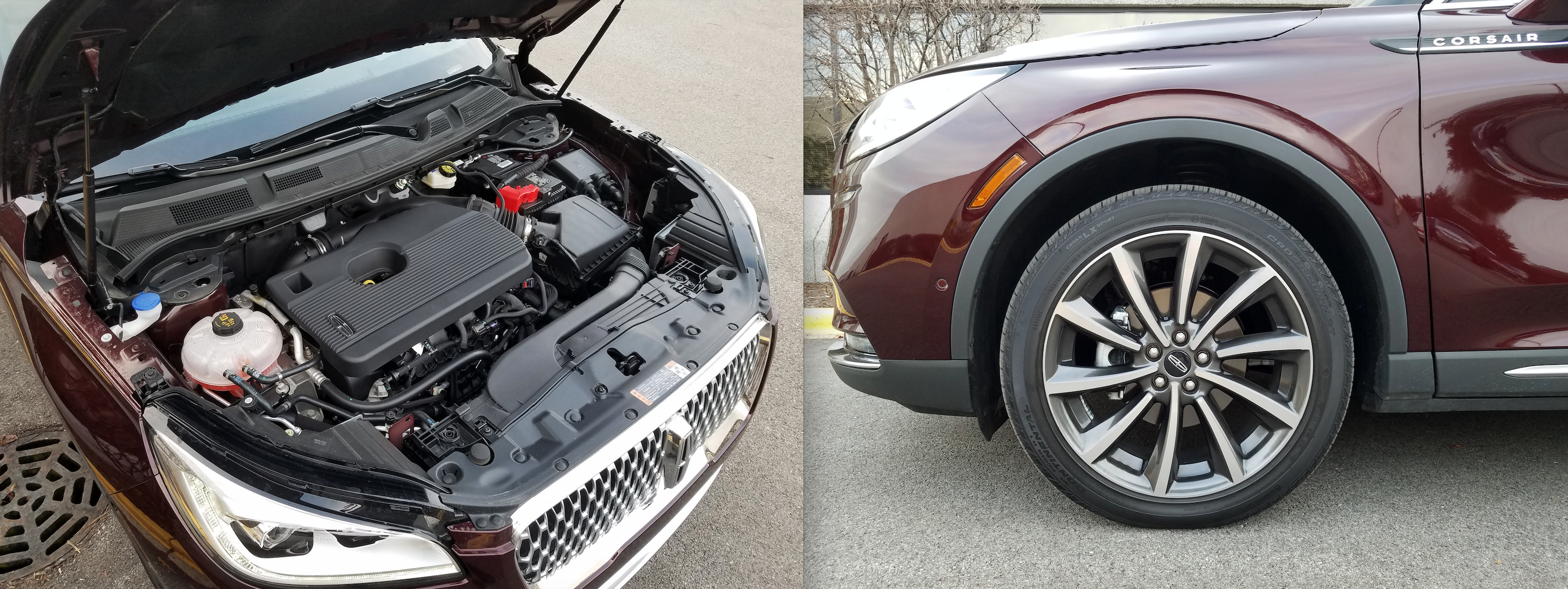
Even when dialed into Excite, which makes subtle changes to the driving dynamics, the Corsair clearly hews to comfort and driver ease. With optional 20-inch alloy wheels (19s are standard) and adaptive suspension, CG’s test truck rode well, particularly for its size, and handled easily. Excite did deliver a sliver of heightened steering effort that was an improvement on the base calibration.
A rundown of other standard features lists key items like full LED exterior lighting, hands-free liftgate, panoramic moonroof, a leather-wrapped steering wheel, heated 24-way power-adjustable front seats, power tilt/telescoping steering column, keyless entry and starting, 14-speaker audio, lane-keeping system, and blind-spot and rear cross-traffic alerts. Among the extras in the big option block were adaptive cruise control, Active Park Assist Plus that effectively handles parking chores in or out of a space, ventilated front seats, and heated rear seats. However, running up past the $60,000 mark, as the test vehicle did, makes the Corsair seem harder to justify against, say, CG’s “Best Buy” premium compacts, the Acura RDX and Infiniti QX50. That’s the world Lincoln’s little crossover lives in now.
Quick Spin: 2020 Acura RDX A-Spec
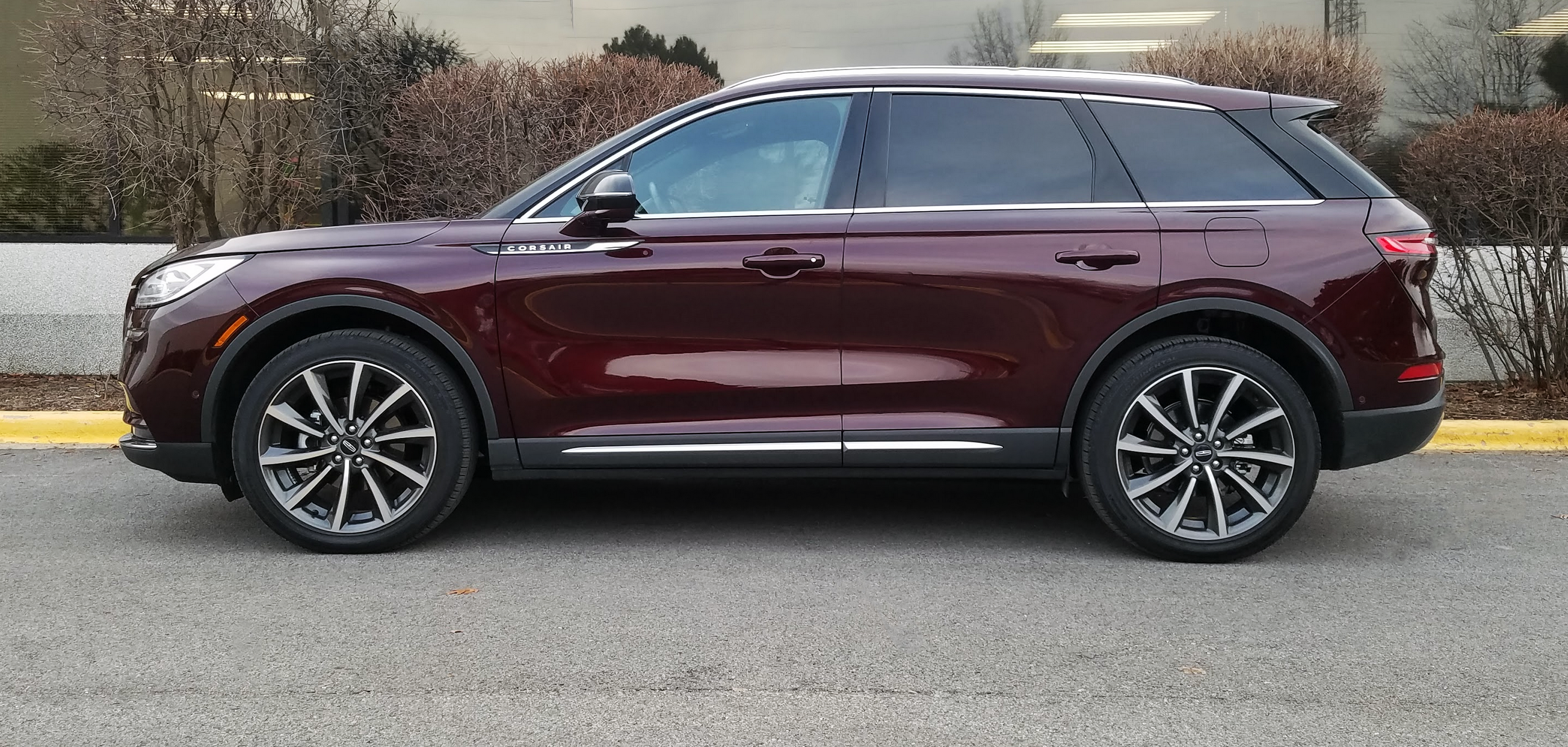
Listen to the Consumer Guide Car Stuff Podcast
2020 Lincoln Corsair Reserve

